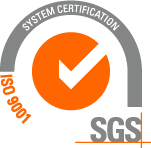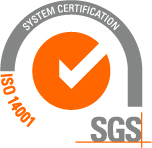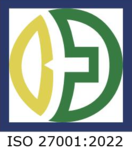When it comes to hard drive degaussing and software erasure tools, there are a number of distinct differences between the two methods that businesses and organizations need to be aware of.
Using software erasure tools to erase a hard drive disk have some upsides for businesses however there are considerable disadvantages of the software erasing method that add a high degree of risk and uncertainty for those that choose this method of volume erasure over degaussing.
Below you will see both the advantages and disadvantages of using software to erase hard disks and where data degaussing with a hard drive degausser or a destroyer, can be more appropriate.
Advantages of software to erase data
- Often easy to use, and gets the job done in a few clicks of a mouse.
- It’s cheap, and can be applied to a number of computers and laptops at the office depending on the licence you buy.
- Software erases existing data on the disk.
Disadvantages of software erasure
- Every hard drive has bad sectors and the software is unable to erase these parts. In a typical hard drive, these bad sectors will not be accessible by any kind of overwrite software program, and the user would need to possess the hard drive’s original bitmap to be able to erase these. Therefore, the data in those sectors will remain and can be accessed at a later stage.
- Software doesn’t erase the data on the disk. In fact, it overwrites a new layer of data, leaving the previous data layer intact.
- Hard drives that have developed faults, or crashed, and can’t be booted with software, will inevitably have large chunks of data remaining on them, which can’t be erased.
- Hard drives often possess an internal auto-recovery function which is known as a Ghost List or G-List for short. This recovery tool enables the disk to automatically save your file and document data without your knowledge to prevent data loss. This portion of the hard drive cannot be accessed by software programs under any circumstances and therefore retains key data information long after you’ve used the software to erase the rest of the disk.
- The BIOS (Basic Input/Output System) may limit you in terms of the size of disks you can erase. In particular, if you have upgraded to 1TB or 2TB drives or larger, there can be restrictions where not all data can be erased – requiring different software for different types of hard drive volumes.
- Hard drives also come in two types of standards, SCSI and IDE, meaning that the overwrite software programs you buy must be able to work sometimes on two formats requiring two sets of programs as one cannot write on the other.
- Software can’t physically remove the data from hard drives no matter how many times it is used to overwrite the data – problematic especially for companies and government departments that require a complete erasure solution for sensitive data.
- Software erasing is not an effective insurance policy against data theft and leaves businesses and organizations exposed to data leaks should hard drives be disposed, re-sold or re-used by other parts of the business without the same level of security.
- Auditors and insurers looking into issues such as data security and data breaches will review systems and solutions in place by the data controller (Your business or organization). If software erasure is the primary method of data removal, this may be considered an unsatisfactory policy to protect and erase data – potentially exposing you to millions of dollars in damages and being void of certain insurance policies.
There are clearly a large number of disadvantages for the software operator in the case of erasing data from a hard drive, and for many businesses and organizations that choose to use this method only. For small businesses and freelancers, this may be more of an appropriate method to erase a disk however in a majority of cases, software is not a viable solution given the high risk nature of data falling into the wrong hands, and the costs of potential lawsuits or losing insurance covers.
Degaussing on the other hand provides some upsides for businesses as well as disadvantages that we will look at below:
Advantages of data degaussing
- The disk of the hard drive and all its data will be magnetically erased – therefore the data will be completely unretrievable and physically no longer exist on the disk itself.
- With a hard drive degausser, the operator can completely audit their data erasure and provide transparent logs that prove the volume data was destroyed (see our popular DataGauss LG degausser for more information.)
- Hard drive degaussing eliminates the risk of data being recovered either by another company, a foreign government or a criminal enterprise, therefore when a company or organization is audited about their data security processes, a hard drive degausser will ensure that data is unrecoverable in any scenario.
- Data degaussing provides businesses with the option to not only erase the data that is on the volume of the disk itself, but to safely dispose of their hard drives for the purpose of recycling.
- Old systems that are no longer in use, including hard drives from the 90s, tapes, and magnetic media, can be fully erased by default regardless of format, age or what’s on the disk. Degaussing destroys all data on any medium of this kind – which is not possible with traditional erasure software.
- Data degaussers are easy to operate and often take just a few seconds to fully erase the entire disk (See our Degausser range to check the speed of degaussing). In comparison to software, which can take hours or days depending on the number of disks, degaussing is a huge time saver.
- Degaussing can also be combined with data destruction, giving operators the possibility of crushing their own hard drives for disposal once they have been degaussed. (See our Crunch 250 Hard Drive Destroyer for more details).
- And finally, degaussers are highly recommended for businesses, and especially government departments that require the highest level of data security, to protect industrial secrets, information on individuals and much more. (We have NSA, NATO and DoD approved degaussers.)
Disadvantages of degaussing
- Using a degausser can be more costly for a small business that has very few HDDs to erase, and is not ideal for the individual user or freelancer.
- Degaussing machines require a place to be stored (in an office, or under a desk) unlike software which is a download or DVD.
For degaussing, there are a number of advantages over disadvantages, but most importantly, in this analysis, the business owner must understand that degaussing is a complete destruction solution for data vs software, which is merely an overwrite – and not a viable way of truly erasing data from hard drives. Depending on your use case, software may be sufficient, but for many, the high risk nature of not being able to fully erase data from the disk is likely to be far more costly for the owner when facing any kind of data breach in the future.
In conclusion, erasing data with software may be a convenient, cheap solution to erase a volume for re-use by small companies or individuals, but in most cases, businesses will be taking a huge risk with their data by choosing this option, and exposing themselves to costs in an era where data laws are imposing strict penalties for oversights in the data space – and companies are being held accountable for failures, often in public.
—-
If you are interested in learning more about how you can benefit from a degausser, and what kind of machine would be suitable, get in contact and an advisor will be able to recommend you a number of options. Alternatively you can call us during business hours to discover more about our product range and speak with one of our engineers. We ship and sell degaussers for a wide variety of organizations and businesses in more than 30 countries, and can provide you with an unlimited lifetime technical guarantee on any unit you buy from us – a world first, and only offered by Verity Systems.





